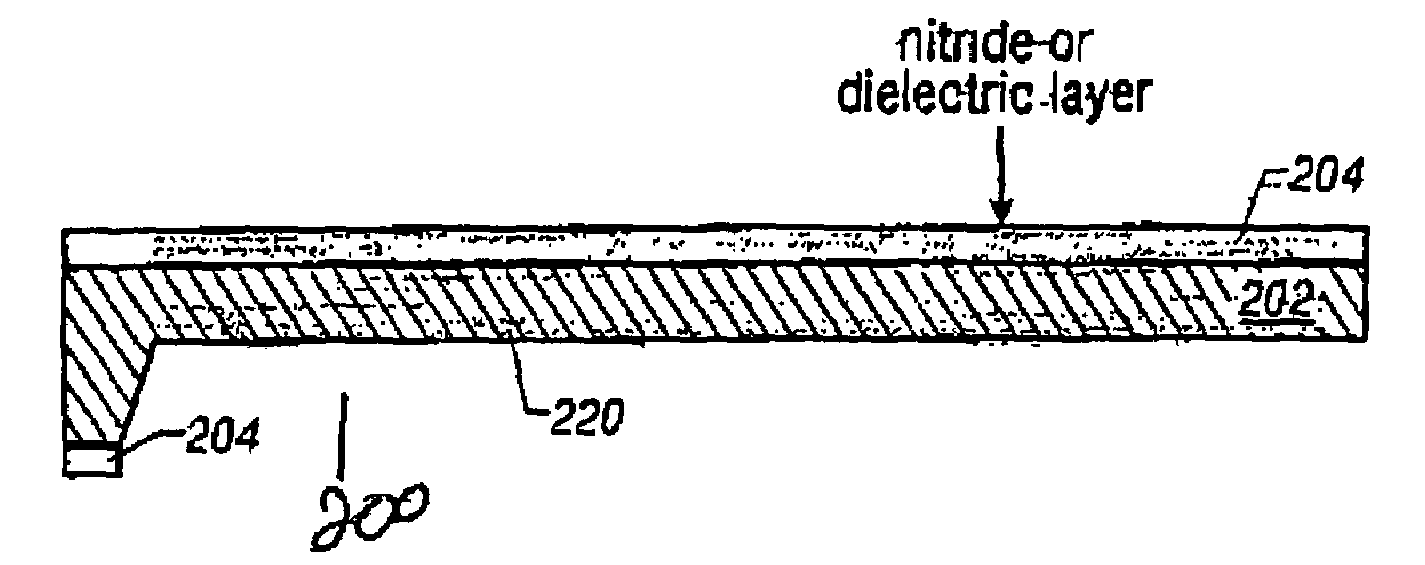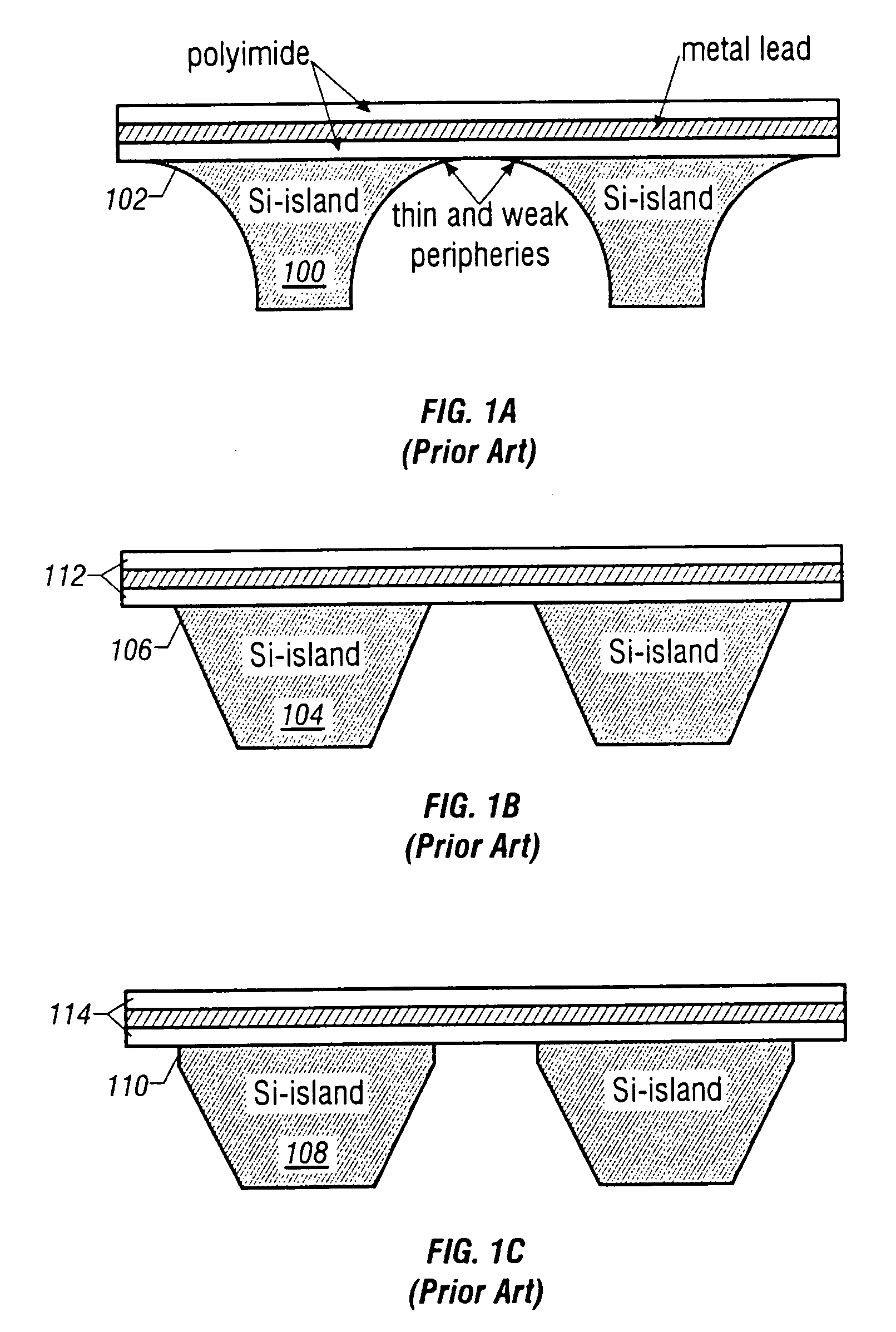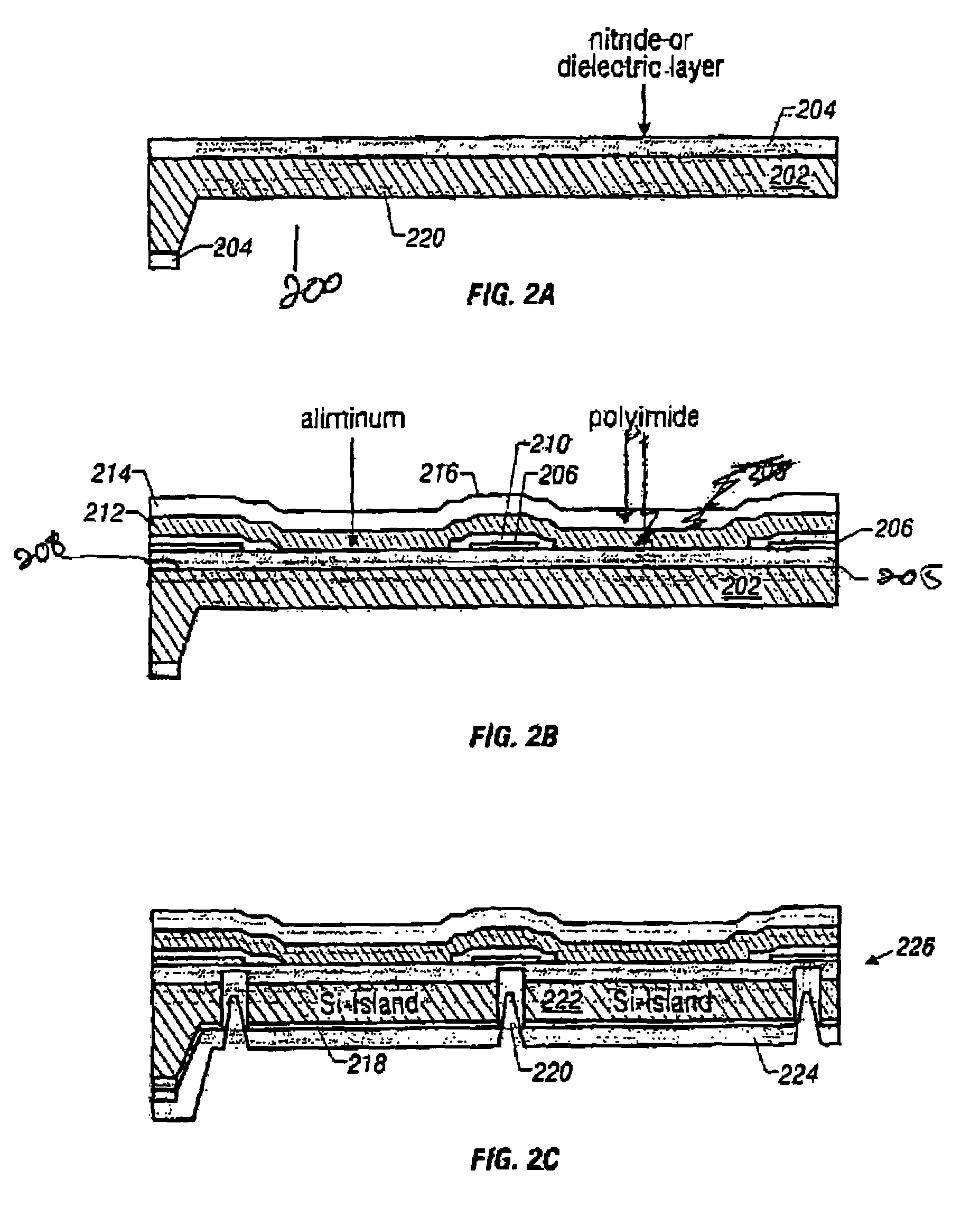Flexible skin incorporating MEMS technology
a skin and flexible technology, applied in the field of flexible materials, can solve the problems of poor skin reliability, difficult profiling, and rigidity of the mems device, and achieve the effect of greatly improving the skin reliability
- Summary
- Abstract
- Description
- Claims
- Application Information
AI Technical Summary
Benefits of technology
Problems solved by technology
Method used
Image
Examples
Embodiment Construction
[0022]The inventors believe that many of the failures of flexible skins in prior art systems were caused by thin peripheries on Si islands. These thin peripheries break during squeezing and folding tests. As shown in FIG. 1A, forming Si islands 100 by isotropic HNA etching resulted in thin and weak Si island peripheries 102.
[0023]In comparison, as shown in FIGS. 1B and 1C demonstrate the structural difference that is obtained when etching with caustic anisotropic etchants such as tetramethylammonium hydroxide (“TMAH”) or potassium hydroxide (“KOH”). This etching forms Si islands 104 which are much more robust when subjected to squeezing and folding. The Si islands 104 formed are in a trapezoidal shape. The resulting Si islands 104 have island peripheries 106 that are thicker and stronger than the corresponding island peripheries 102 shown in FIG. 1A. As shown in FIG. 1C, the combination of anisotropic etching and reactive ion etching (“RIE”) results in Si islands 108 which have isla...
PUM
| Property | Measurement | Unit |
|---|---|---|
| thick | aaaaa | aaaaa |
| thick | aaaaa | aaaaa |
| thick | aaaaa | aaaaa |
Abstract
Description
Claims
Application Information
 Login to View More
Login to View More - R&D
- Intellectual Property
- Life Sciences
- Materials
- Tech Scout
- Unparalleled Data Quality
- Higher Quality Content
- 60% Fewer Hallucinations
Browse by: Latest US Patents, China's latest patents, Technical Efficacy Thesaurus, Application Domain, Technology Topic, Popular Technical Reports.
© 2025 PatSnap. All rights reserved.Legal|Privacy policy|Modern Slavery Act Transparency Statement|Sitemap|About US| Contact US: help@patsnap.com



